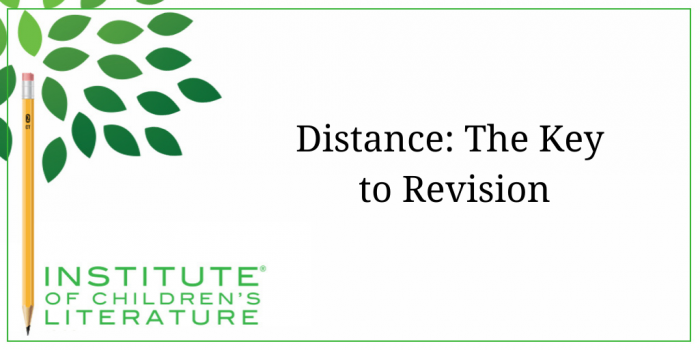1000 N. West Street #1200, Wilmington, DE 19801
© 2024 Direct Learning Systems, Inc. All rights reserved.

We teach our students how to write and get published!
View our Course Catalog >
As most writers know, it’s much easier to find the flaws in someone else’s work than to find the flaws in your own. Part of the reason for this is distance. When you’re reading work by another author, you aren’t caught up in all the personal things that went into the creation of the story. You are actually judging the story based on the merits of what you read on the page. So to be able to revise your own work successfully, you need to get the same kind of distance that you have when you’re reading someone else’s work. That’s not always easy, but there are some tips that can help.
Time
The best way to get distance is through time. This is why so many writers talk about setting the work aside for a period of time between the writing and the revision. Ideally you need weeks or even more to get enough distance to see clearly, but often we simply don’t have that kind of time. Still, the bare minimum you should consider would be three or four days. Set the piece aside and spend the time reading recently published books, researching, or even starting a new piece.
Because of the value of time as a means of doing better revision, it’s actually a good idea to hang onto old stories that haven’t sold. Often you can return to something months (or even years) later and find the elements that work best within the story. You might then be able to revise the piece and sell it, or rewrite the piece, crafting something new built on the best elements of the old. A surprising number of writers have successfully sold stories that sat unattended and nearly forgotten. In fact, writers will talk about “drawer novels” (which are novels the writer considered “abandoned”) which are later revised and become successful books.
Fresh Eyes
Sometimes you can’t give the manuscript the time that would be ideal. You may only have a few days to set it aside, and though you have some distance, you may realize you don’t have enough to revise perfectly. There are other ways to help you get that distance. Here are two:
1. Change the way your story looks as you read it.
If you wrote the story on your computer, try printing it out and revising it on paper. That difference in the way it looks and the tactile feeling of printed pages over computer screen can give you the distance that you weren’t able to get through time.
In a novel or when you flatly cannot revise on paper, changing a story’s font may help you get that distance. Use a clear, readable font that looks very different from the one you normally work with.
2. Read with your ears instead of your eyes.
Use the mechanical voice of your computer to “read” the manuscript back to you. This will help you catch typos, questionable grammar and awkward phrasing. Reading the text aloud is another way to get a different perspective. It’s all about consuming the manuscript differently.
Close Reading
Looking at the story in new ways can also help. There are a number of ways to do that.
1. Use color to help you see specific things about the story.
Are you unsure whether you do enough showing? Try highlighting all the specific sensory detail in the story and see how much of that actually appears on the page. Are you worried that you don’t have a balance of action and dialogue? Try highlighting all the dialogue in one color and all the action in another. Using color to see your manuscript differently can be done using the highlight feature in your word processor or it can be done on print outs with highlighter pens. If you use your computer highlighting, you can also “zoom out” on the manuscript and look at multiple pages at one time to see how the highlights look overall. This can be very helpful in getting a feeling of how the manuscript balances overall. Does all your dialogue cluster on a few places? Do you do all your showing at the beginning and then try to get your dialogue to carry the rest of the story? Turning your manuscript into colorful lines will often give you a “big picture” look at the whole thing.
2. Go backwards.
When you get down to the final search for typos, misspellings, and grammatical errors, it can be helpful to use tricks that let you see what you actually typed instead of what you think you typed. One easy way to do this with a short piece is to read it backwards, from the last sentence to the first. By breaking up the story flow, you’ll better see what each line actually says.
All of these tips will help you get the kind of distance that will let you see your manuscript with fresh eyes, and therefore have the best chance of doing the kind of revision that will help you sell the finished product.
1000 N. West Street #1200, Wilmington, DE 19801
© 2024 Direct Learning Systems, Inc. All rights reserved.
1000 N. West Street #1200, Wilmington, DE 19801
© 2024 Direct Learning Systems, Inc. All rights reserved.
1000 N. West Street #1200, Wilmington, DE 19801
© 2024 Direct Learning Systems, Inc. All rights reserved.
1000 N. West Street #1200, Wilmington, DE 19801
© 2025 Direct Learning Systems, Inc. All rights reserved.
1000 N. West Street #1200, Wilmington, DE 19801
©2025 Direct Learning Systems, Inc. All rights reserved. Privacy Policy.
1 Comment
As always, great information. Love your blog.